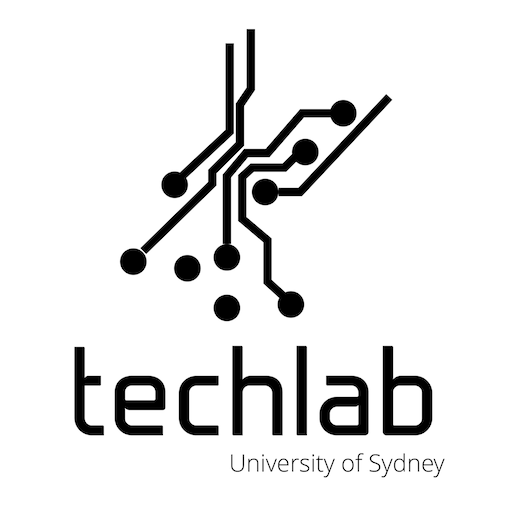Virtual Tours, a pandemic solution with wider implications
Virtual tours have been in use in marketing and real estate as interactive, informative approaches to immersing customers in a space, primarily in sales and marketing. However, broader use cases in education and training continue to come to the fore.
Providing site-specific learning experiences at scale, both synchronously and asynchronously, while measuring the engagement of learners, is the most difficult challenge the pandemic has imposed on educators. With the implementation of digital tours described here, we can deliver rich and pedagogically sound experiences, expanding the reach of tertiary learning beyond the cohort of students able to attend in person. While assuring a baseline equitable experience for all students, these experiences are accessible from a browser or compatible with VR headsets.
It starts with photos and videos - the technology hasn't shifted massively in 2020-22, so as a starting point for some equipment employed here, you will want to reference What we've learned from 7 years of 360 video. Since that article was published, the Insta-360 one R has formed a solid foundation for our mixed reality and 360 platforms.
Virtual Site Visits
EPIC lab is a Research laboratory using 3D tech to improve global quality of care around the world, located at Children's Hospital at Westmead. As part of the Applied Medicine Major, students previously attended this site to learn about prototyping, product design, and regulatory compliance for medical devices. Hospital site visits were highly limited with the strict procedures introduced because of the COV_SARS 2 Pandemic. https://epic.techlab.works was developed across a few days to allow students to visit the laboratory virtually and see some of the technology deployed there. Combined with online discussion and tutorial participation via zoom, the lack of access was supplemented.
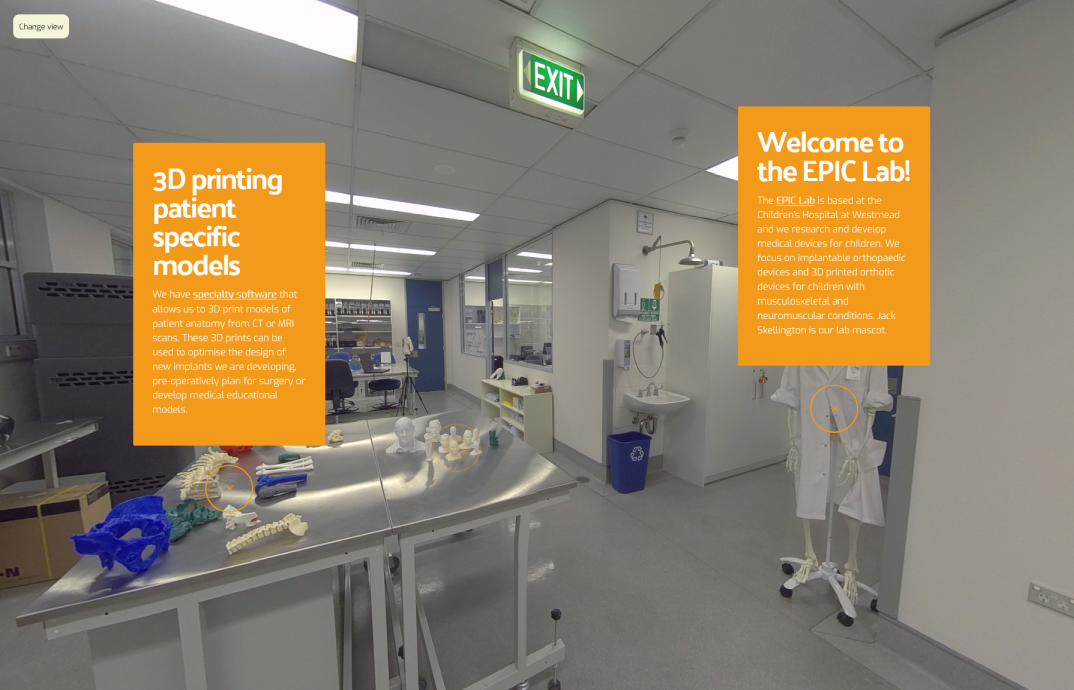
Tutorial Lab inductions
Since travel was restricted in early 2020, many students for the semester (and the 5 semesters since) were unable to travel to Sydney campus; this meant that in classes with heavy tutorial focused curriculum, students would be undertaking these studies virtually. While some experiments and tutorial activities for electrical engineering students could use online toolkits, the actual environments of the labs are a core part of the study. Our solution to this was to create a similar virtual tour for each of the labs at https://eielabs.techlab.works/ highlighting the equipment that students would be using online simulated versions of. We also included the floor plan of the J03 electrical engineering building, for context, and to connect the students to campus, as well as induction to points of safety.
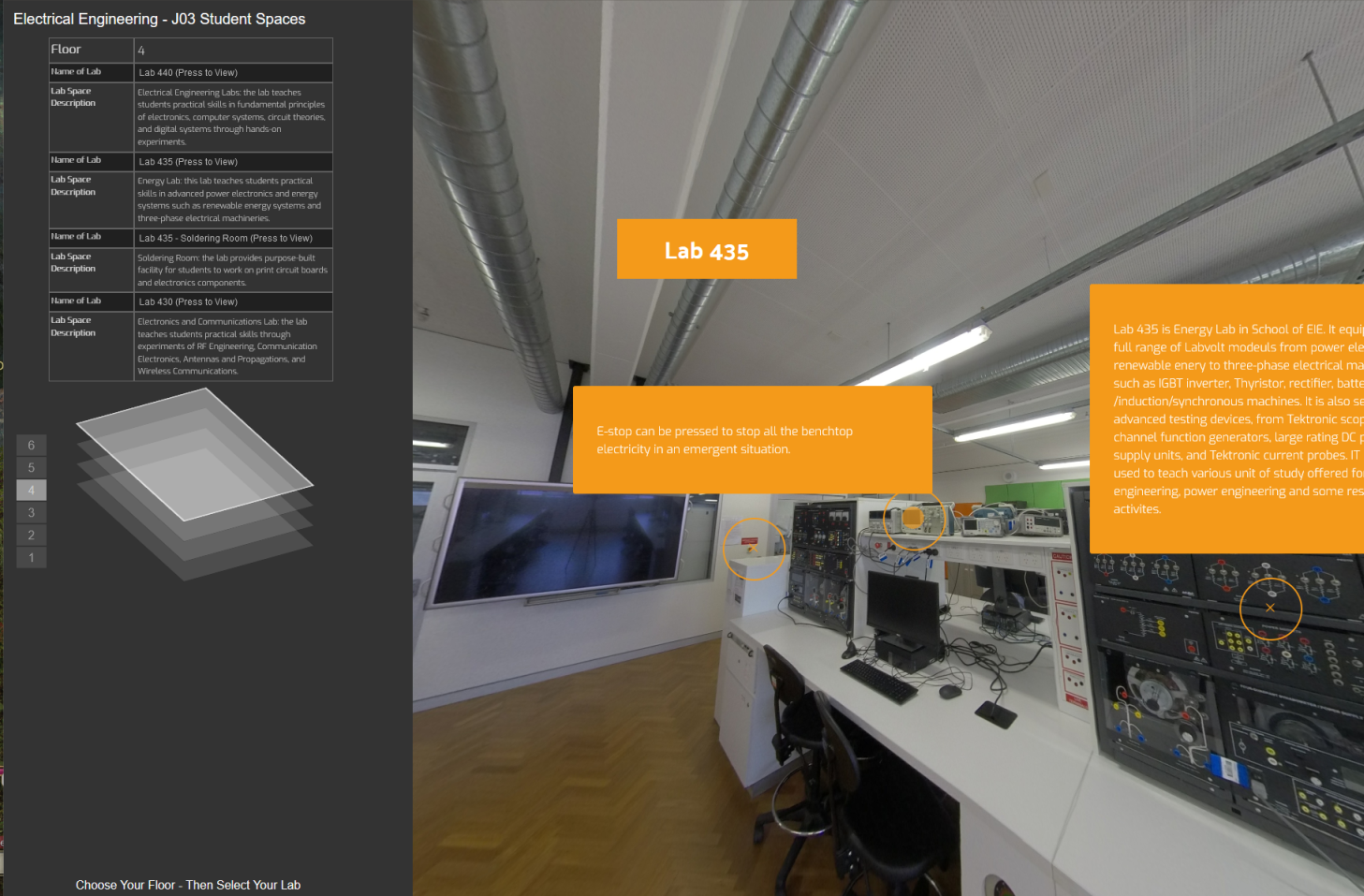
Urban Ecology field trips online
Walking around for many hours to investigate places where people congregate was simply not viable during the pandemic, In Urban ecology, both undergrad and postgrad units involved groups of 150-400 students per semester traversing 12-15 km, walking in groups across different zones on campus. This entailed note-taking and producing reports (on buildings, sustainability and green areas) from these site visits for tutorial activities and assessments. While the pandemic a blocker for large groups to gather on campus, there was already a pre-existing inequity issue for students with disabilities or special needs to participate with the same level of rigour as their peers.
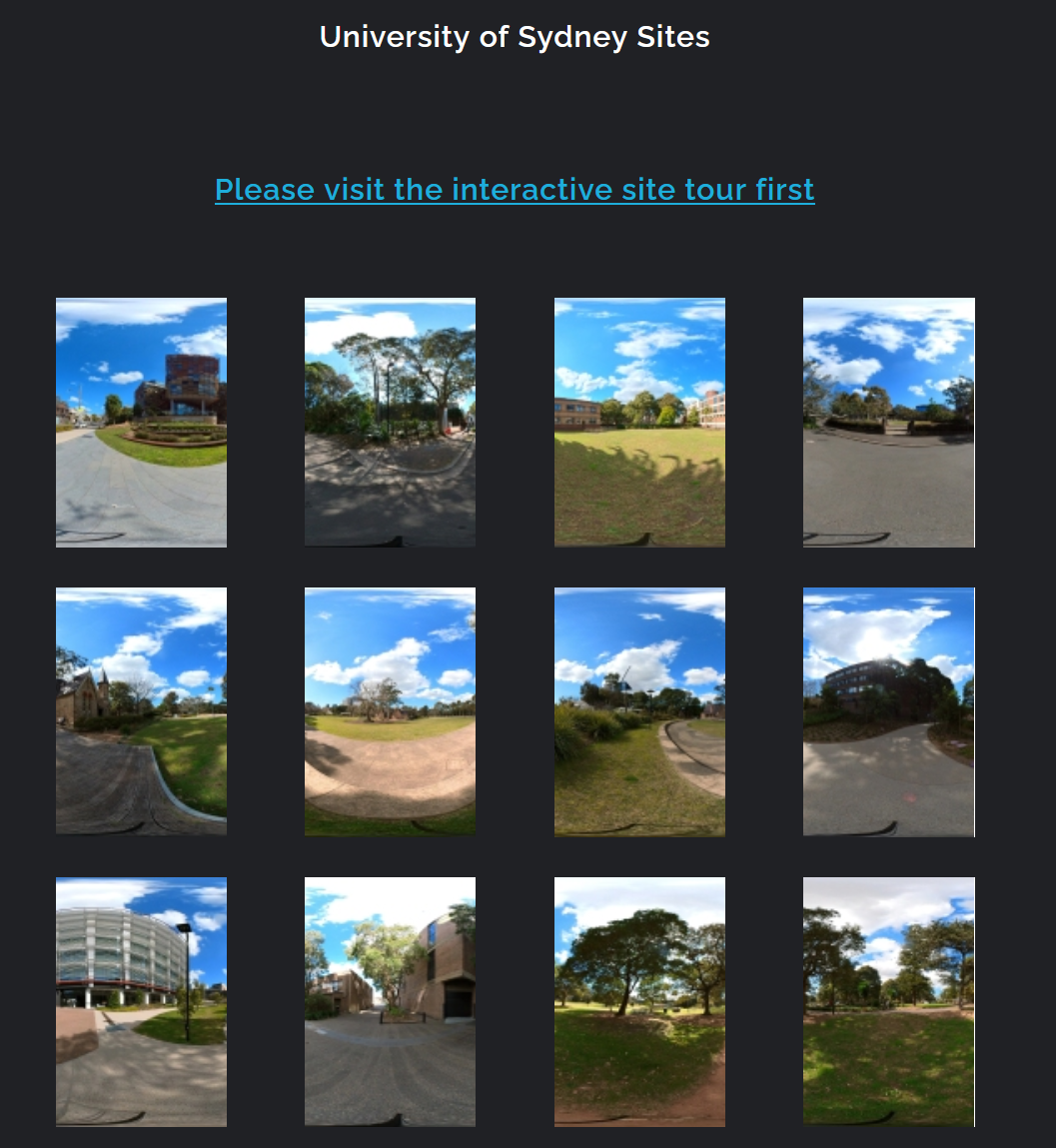
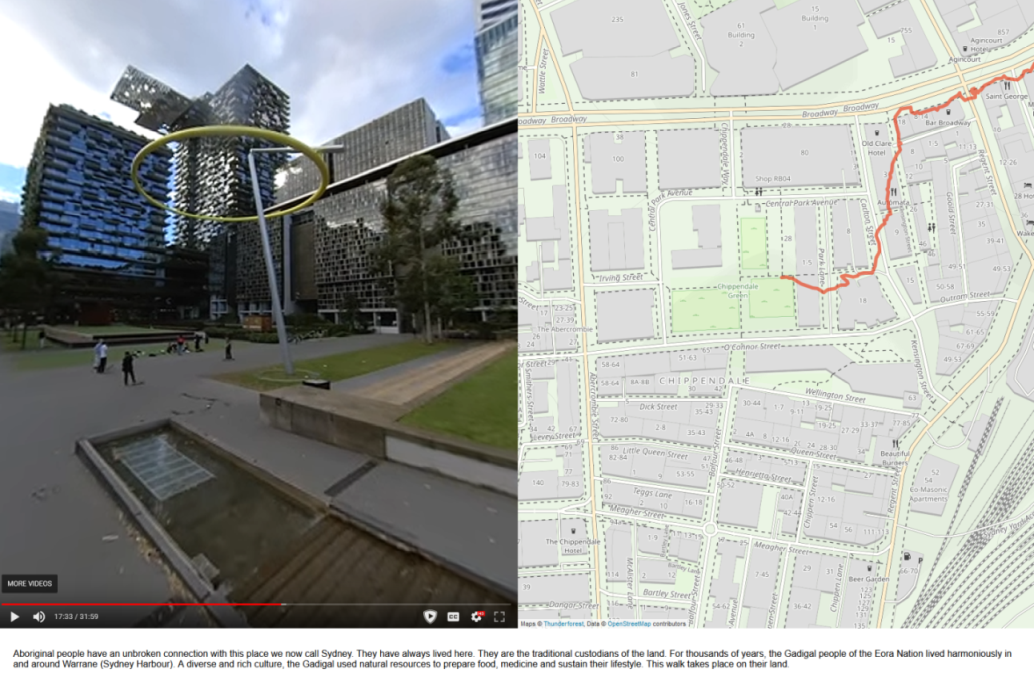
Museums and object based learning
The Chau Chak Wing museum opened in 2020, resplendent with nearly half a million collection items. Many academics had begun the work of integrating object-based learning into curriculum; museum interactions were slated to be a key part of multi-faculty graduate experiences. The dedicated learning spaces developed to allow students to interact and observe ancient artefacts, ethnographic exhibits, science and historic photography and contemporary artworks.
70% of the items on display in the CCWM were previously locked away in storage for 20+ years and sizeable resource investment went into having them ready for learning and research - the challenge and opportunity was to now have the online environment compliment the built environment. In order to have our students engage with the museum, we co-developed a tour of some of the more interesting artefacts with students, and tie them to their studies. We worked to produce multiple versions for Arts, Science and Business, plus a communal version the museum could use in their communications and outreach. E.g., https://usydcampus.techlab.works/ includes prompts for students to engage and undertake assessment.
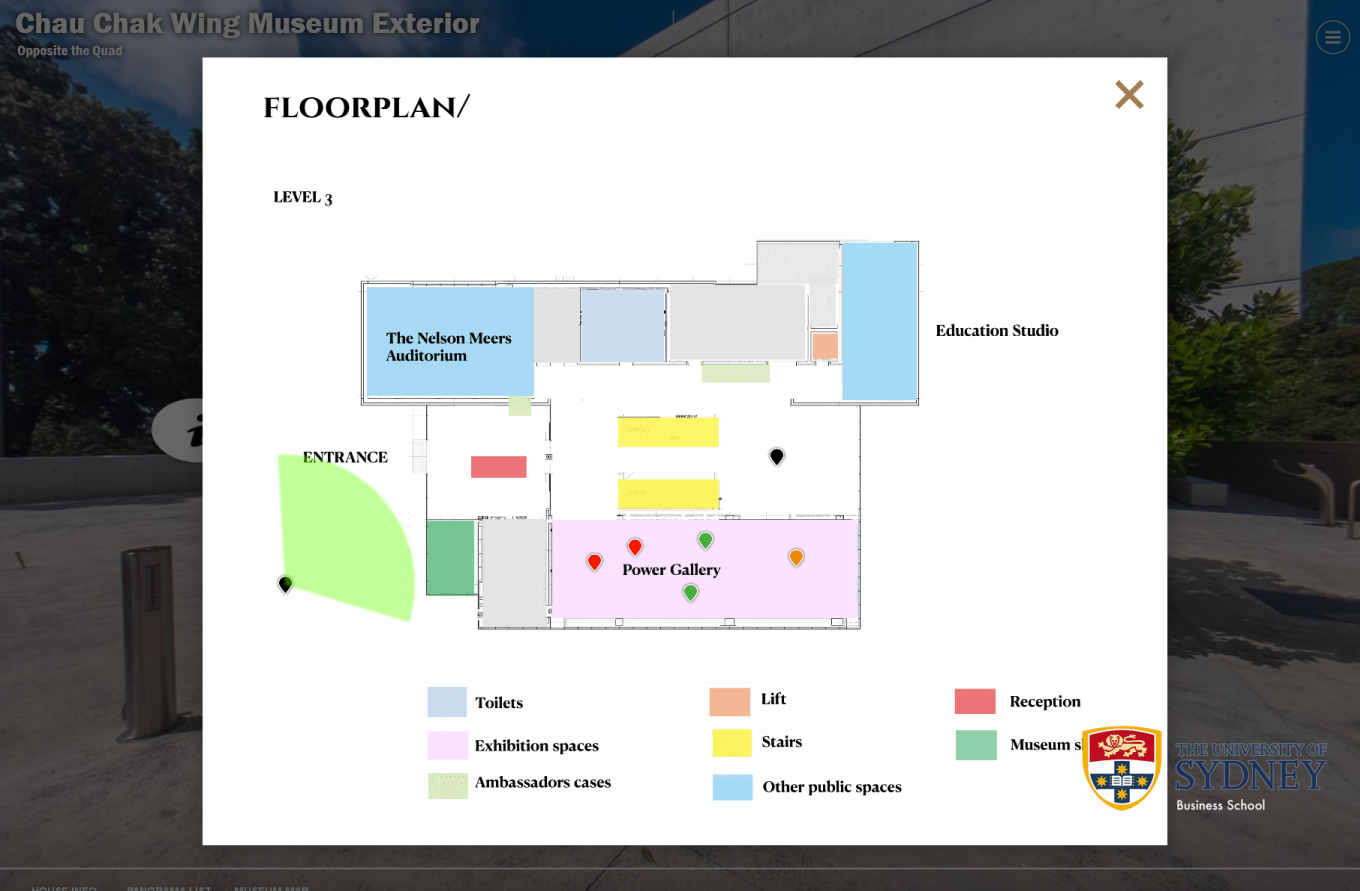
Extending into training
With high-fidelity 360 video comes the opportunity to implement training and compliance. Ranging from Virtual Food Science labs, Dental Radiography, Cadigal Green land learning, to 'Farm to Table' Supply Chain, we have created immersive experiences to train students and even industry partners and embed them in spaces that would otherwise be difficult or impossible. E.g., the University has only four Dental Radiography suites for use by several hundred students. However, using VR, we can grant them access to quizzes and tests for self reflection with direct access to the spaces virtually at the same time.

Connectedness to campus
FASS1000 - a foundational unit for ALL commencing students of the faculty of Arts and Social Science, was originally conceived with an instructor led walkthroughs of different parts of campus; covering aspects like space, place, history, activism, culture and community; to build a sense of connectedness to the University of Sydney. Not only did we virtualise this experience, but also equipped students with the ability to create and share their own journey-map - THe Unit of study won the 2021 Vice Chancellor's award for innovation and excellence in teaching.

Evolution of teaching platforms in 3D
All previous examples share common barriers - students/educators cannot create them without significant technical training (e.g., React and JavaScript based tours, complex 3D modelling tool sets), or significant costs in licenses, in the case of the Museum and Radiography examples. 3D Vista software allows rendering 360 experiences, but still requires a Sysadmin to deploy it via AWS or other similar infrastructure. Additionally, while we might password-protect web services, or implement a web access gateway for students/staff to use their university credentials for access, we can't measure granular engagement by users for the purpose of auditing, or for assessment.
To that end, we have been increasing the utility of our in-house VR asset management tool set: Eta-Ki.

Eta-Ki now supports 360 image/video annotation, creating collections, linking to associated Assets, allowing a "virtual tour" to occur entirely inside the application. This avails the benefit of granular navigation and interaction metrics linked to each user, plus the ability to protect intellectual property behind the university identity system. Eta-Ki also supports gigapixel imagery and 25 formats of 3D models, which otherwise pose cross-platform compatibility challenges. Now extended it to generate gigapixel imagery from Microscopy slides, it is built entirely 'serverless' and already in use in 4 units of study, 6 more planning to go live in soon.
While bespoke solutions and off-the-shelf tools like 3D Vista help in the short term, they are not sustainable as a delivery of comprehensive XR interactions, As Eta-Ki grows, we hope to have that solution in place enabling students, educators, Academics and community members to experience the University of Sydney, virtually.
